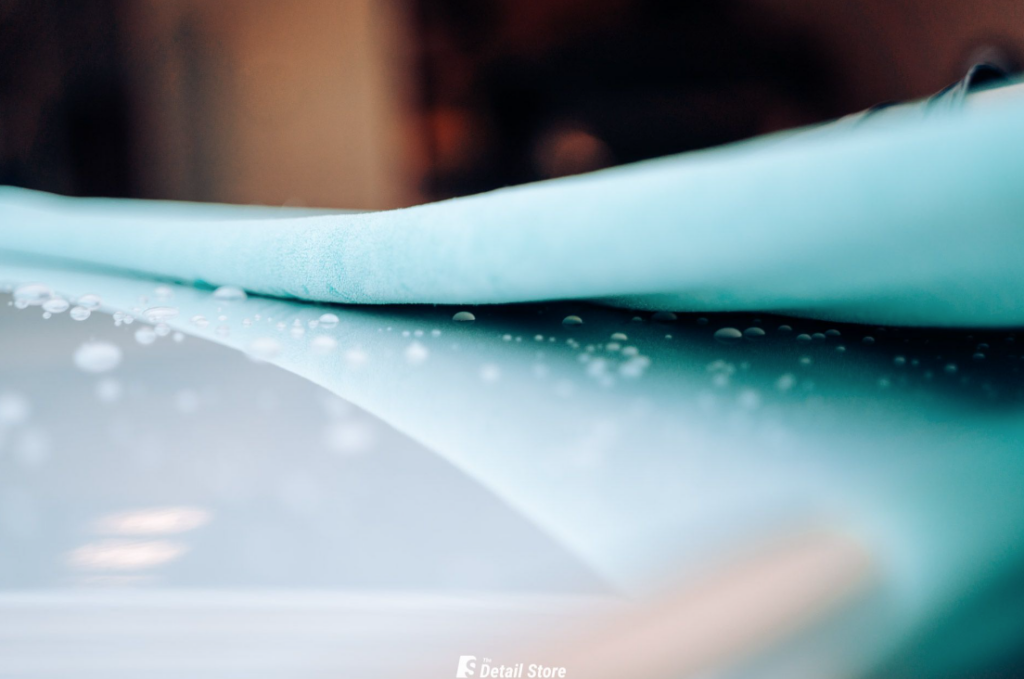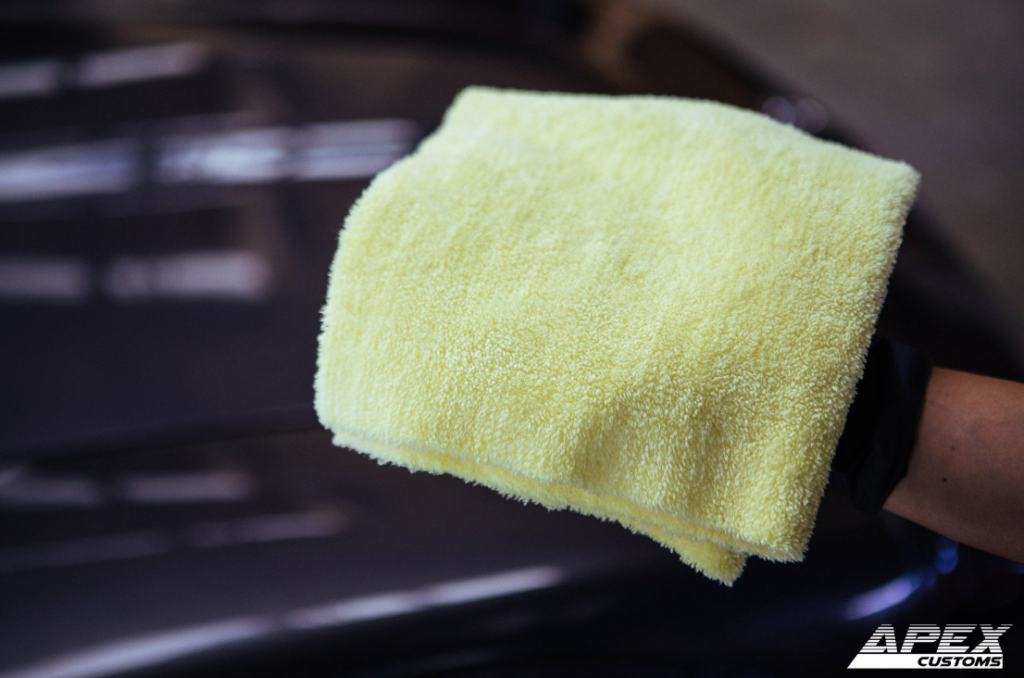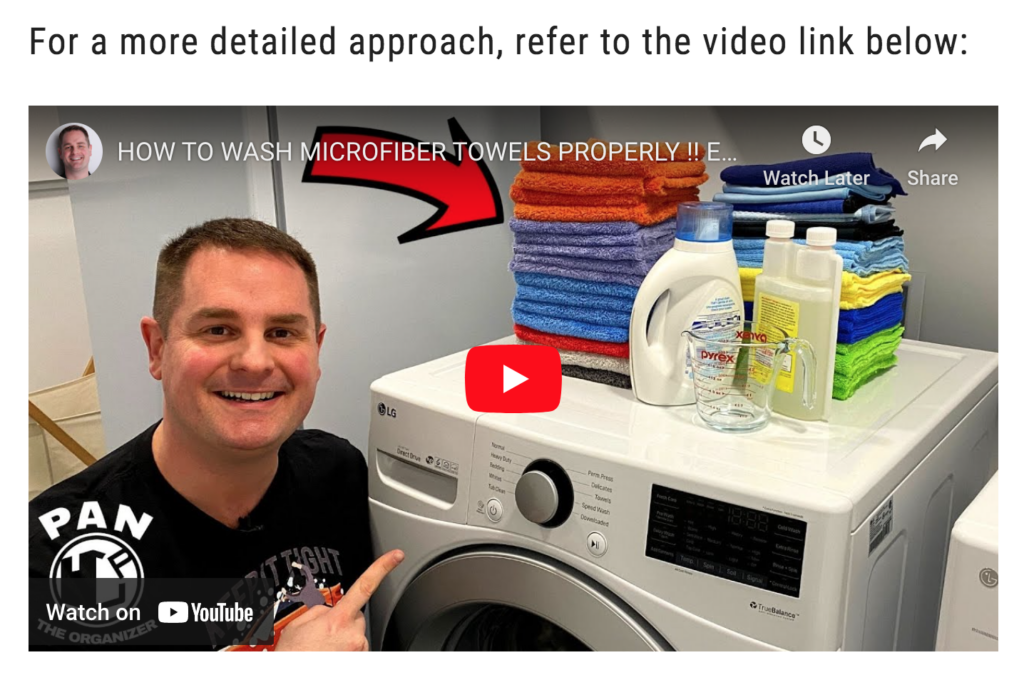One of these vital details that differentiate a decent job from an excellent one is the humble microfibre towel- a tool that holds immense potential in preventing swirls and scratches, fostering a pristine finish.
Let’s explore how to select the right microfibre towels for your detailing activities to keep your car looking as good as new.
Understanding Microfibre Towels
Definition and Structure of Microfibre
Microfibre is a synthetic (inorganic) fibre which is extremely fine, even finer than a strand of silk (which is about a fifth of the diameter of human hair!).
Microfibre can vary in properties depending on the fibre it’s created from. This results in an incredibly adaptable fabric with plenty of advantages over natural woven materials.
Its inorganic nature is the natural enemy of bacteria which feed on organic material.
What is Microfibre Made Of?
Microfibre is mainly made up of 2 components:
- polyester (70 % – 80%)
- and polyamide (20% -30 %)
Polyester holds the towel together and constitutes about 70%-80% of the towel. Too much polyester results in a towel which feels less plush and inhibits its ability to retain water, however too little polyester and the towel will not hold together.
The remaining 20-30% of the towel is made of polyamides, the main ingredient that gives the towel its softness, absorbency and durability.
The combination of these 2 terms is usually mentioned by way of 80/20 or 70/30 in the industry.
The first figure tells us the polyester content while the second figure tells us the polyamide content.
A general rule is that 70/30 towels should always be used on the exterior of a vehicle/marine craft to avoid scratching the finished surface. Due to the soft nature of the 70/30 towels, they are often the preferred choice when selecting a towel for exterior paint use.
Types Of Microfibre Towels
Understanding the different types of microfiber towels (according to the weave of towel) available can aid in selecting the best fit for specific tasks.

For example:
- Circular weave (Eagle edgeless) – Excellent for application of product
- Twisted loop weave – Excellent at drying
- Pearl weave – Excellent at levelling ceramic or quartz coatings
- Standard weave – General purpose like the Utility Towels
This table will compare other attributes including absorbency and softness.
Comparing Different Detailing Towels
| Towel Type | Weave Description | Primary Use | Absorbency | Softness | Durability | Care Instructions |
| Circular Weave (Eagle Edgeless) | Soft, edgeless design, circular pattern | Application of waxes, sealants, quick detailers | Moderate | Very High | High | Wash separately in mild detergent; avoid fabric softeners and bleach; air dry or tumble dry low |
| Twisted Loop Weave | Loops are twisted, creating more surface area | Drying the vehicle after wash | Very High | High | High | Wash separately before first use; machine washable; avoid high heat |
| Pearl Weave | Small, tight, pearl-like loops | Leveling ceramic or quartz coatings | Moderate to High | Moderate | Moderate to High | Machine wash with gentle detergent; tumble dry low or air dry |
| Standard Weave | Uniform, general-purpose weave | General cleaning, wiping, and polishing | Moderate | Moderate | Moderate | Machine washable; separate from lint-producing fabrics; air dry or low heat in dryer |
Features to Consider While Choosing a Microfiber Towel
GSM (Grams per Square Meter)
GSM is a critical factor to consider as it indicates the density of the fabric. Higher GSM towels (350-600) are thicker and more absorbent, making them ideal for tasks like drying. Lower GSM towels (250-350) are lighter and can be used for cleaning windows or polishing.
Blend
Microfiber towels are often a blend of polyester and polyamide. The ratio can affect the absorbency and softness of the towel. An 80:20 blend is common for general-purpose towels, whereas a 70:30 blend might be found in higher-end towels, offering a bit more softness and absorbency.
Edge Type

The edge type of a towel can impact its scratch potential. Options include:
- Satin or Silk Edges: These are gentle on paint and less likely to cause swirls or scratches.
- Microfiber Edges: These are more absorbent and can clean edges and seams effectively.
Size Variations
Depending on the task, different sizes may be more suitable. Larger towels are generally better for drying, while smaller ones are great for detailing work.
Matching the Microfiber Towel to the Task
Different types of microfiber towels perform better than others depending on the task. Here is what we find works best.
For Washing
Opt for plush or terry weave towels with a higher GSM for washing, as they can hold more water and cleaning solution, providing a thorough clean without scratching the surface.
For Drying
Waffle weave towels are preferred for drying, given their higher absorbency rate, which helps in quick and streak-free drying.
For Buffing
For buffing, plush microfiber towels with a higher GSM and softer blend (like 70:30) can provide an optimal finish without leaving swirl marks or scratches.
Tips for Maintaining Your Microfiber Towels
Maintaining your microfiber towels is important so that they continue to provide effective and streak-free cleaning, ensuring the longevity of your car’s pristine finish. Here’s what we suggest:
Washing
- Wash separately from other fabrics to prevent lint and residue.
- Use a microfiber-specific detergent to maintain the quality of the fibres.
- Avoid fabric softeners as they can clog the microfiber strands.
Drying
- Air-dry or use a low heat setting in the dryer.
- Avoid high heat as it can damage the fibres.
Storage
- Store in a clean, dry place to prevent contamination.
- Keep different towels for different tasks to avoid cross-contamination.

Conclusion
Who would have thought that an unassuming material like the microfiber towel could make a difference? In the world of auto detailing, it certainly does.
Choosing the right microfiber towel is not just about enhancing the aesthetic appeal of your car; it’s about preserving its value and integrity.
By selecting the appropriate towel for each task and maintaining them well, you ensure a scratch-free, immaculate finish that can make your vehicle look brand new each time.
Frequently Asked Questions (FAQs)
Microfiber towels are widely considered the go-to choice for car detailing because of their exceptional absorbency and softness. The towels are constructed with fine fibers, usually a blend of polyester and polyamide, that are split into an ultra-fine structure. This structure helps in lifting and trapping dirt particles instead of just pushing them around, minimising the risk of scratching the paint surface. Additionally, the high absorbency rate of microfiber towels makes them excellent for drying your vehicle, as they can hold many times their weight in water.
A high-quality microfiber towel often has the following characteristics:
- Fiber Density: Measured in GSM (grams per square metre), a higher GSM indicates a denser, thicker, and more absorbent towel.
- Blend Ratio: The blend ratio of polyester to polyamide affects the performance of the towel. A common high-quality blend is 70:30, offering an excellent balance of softness and durability.
- Edge Design: Quality towels often have a satin or silk edge to prevent swirl marks or scratches on the car’s surface.
- Test for Softness: A simple test for quality is to gently rub it against your skin; a quality microfiber towel should feel soft and not abrasive.
While microfiber towels are designed to minimise the risk of scratching, improper use can still potentially harm your car’s finish. Scratches can occur if the towel is contaminated with dirt, debris, or other abrasive materials. Always ensure your microfiber towels are clean and free of debris before using them on your car. It is also advisable to use separate towels for different tasks (like one for paint and another for wheels) to prevent cross-contamination.
Proper maintenance of your microfiber towels is essential to extend their lifespan and maintain their effectiveness. Here are a few steps to consider:
- Washing: Wash the towels separately from other laundry to prevent lint and fabric softener residues from contaminating them.
- Detergents: Use a dedicated microfiber detergent or a gentle liquid detergent free of softeners and bleach.
- Drying: Air dry the towels or use a tumble dryer on a low-heat setting.
- Storage: Store the clean, dry towels in a clean, dry place to prevent contamination.
Choosing the right microfiber towel depends on the specific detailing task at hand. Here are some general guidelines:
- Drying: Use a waffle-weave or plush towel with high GSM for superior absorbency.
- Buffing: Choose a medium-nap towel for removing waxes or polishes.
- Interior Cleaning: Use a general-purpose microfiber cloth with a lower GSM for interior surfaces and glass cleaning.
- Wheel Cleaning: Utilise a separate, colour-coded towel for cleaning wheels to prevent cross-contamination.
Think of it like horsepower in any vehicle, more is not always better. Depending on the event, say a time-attack, more horsepower isn’t going to get you very far if your chassis isn’t tuned to the track. The same concept applies for GSM, more GSM isn’t going to necessarily get you the result you’re after unless it’s suited for the specific purpose.
-

Aaron is a passionate car detailing enthusiast who channels his expertise and love for pristine vehicles into engaging blog content for a leading detail store website. With a keen eye for detail and a wealth of knowledge about the latest products and techniques, Aaron provides invaluable insights and tips to fellow car enthusiasts. His dedication to achieving showroom-quality results and his ability to explain complex processes in an easy-to-understand manner make his blog a go-to resource for anyone looking to elevate their car detailing game.
-

Calvin brings a wealth of experience across multiple engineering disciplines, including chemical, mechanical, and electrical engineering. His in-depth knowledge of filtration systems and hydraulic pumps has positioned him as an expert in the pressure washer product category. With a unique combination of technical expertise and business insight, Calvin excels at solving complex challenges and driving innovation, particularly in the car detailing industry.

